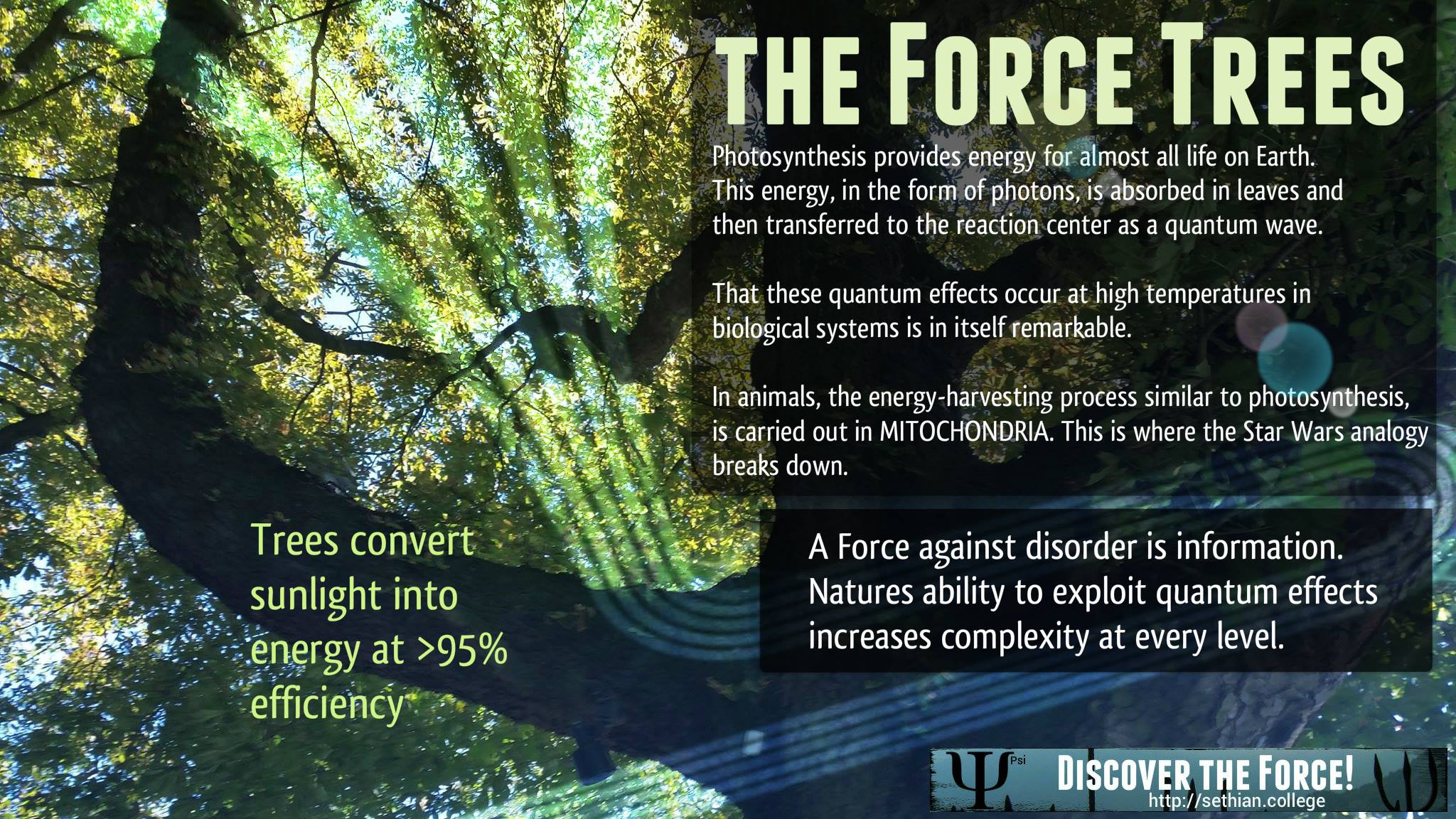| Star Wars VIII: Origins of the Force |
A boy and a girl visited it. Kids start to develop strange powers while standing near a mysterious tree. So much for the fiction. There are two possible ways within classical physics to understand this total incapacity of your mental side 1. The first way is to consider your thoughts, ideas and feelings to be by-products of the activity of your brain. 2. The second way is to contend that each of your conscious experiences Materialism draws no support from contemporary physics and is in fact contradicted by it. Placebo hook: the quantum neuro-transmitter interface At their narrowest points, calcium ion channels are less than a nanometer in diameter. This extreme smallness of the opening in the calcium ion channels has profound quantum mechanical implications. The narrowness of the channel restricts the lateral spatial dimension. This causes the quantum cloud of possibilities associated with the calcium ion to fan out over an increasing area as it moves away from the tiny channel to the target region where the ion will be absorbed as a whole, or not absorbed at all, on some small triggering site. This spreading of this ion wave packet means that the ion may or may not be absorbed on the small triggering site. This quantum splitting occurs at every one of the trillions of nerve terminals. In fact, because of uncertainties on timings and locations, what is generated by the physical processes in the brain will be not a Once the physical state of the brain has evolved into this huge smear of possibilities one must appeal to the quantum rules, This focus on the motions of calcium ions in nerve terminals is not meant to suggest that this particular effect is the only place where quantum effects enter into the brain process, or that the quantum process acts locally at these sites. What is needed here is only the existence of some large quantum effect. The focus upon these calcium ions stems from the facts that in this case the various sizes (dimensions) needed to estimate the magnitude of the quantum effects are empirically known, and that the release of neurotransmitter into synaptic clefts is known to play a significant role in brain dynamics. The Penrose–Hameroff model requires that the quantum state of the brain has a property called macroscopic quantum coherence, which needs to be maintained for around a tenth of a second. Nerve terminals, ion channels and the need to use quantum theory in the study of the mind–brain connection That assumption would have been reasonable during the nineteenth century. But now, in the twenty-first century, it is rationally untenable. Quantum theory must be used in principle because the behaviour of the brain depends sensitively upon atomic, molecular and ionic processes, and these processes in the brain often involve LARGE quantum effects. The Quantum Zeno Effect It gives a name to the fact that repeated and closely spaced observational acts can effectively hold a quantum state in place for an extended time-interval that depends upon the rapidity at which the quantum actions are happening. This rapidity is controlled by the amount of effort being applied. In our notation, the effect is to keep an idea in place longer than would be the case if no effort were being made. This ‘holding’ effect can override very strong mechanical forces. Reference: http://www-physics.lbl.gov/~stapp/PTRS.pdf "Quantum physics in neuroscience and psychology: by Jeffrey M. Schwartz, Henry P. Stapp and Mario Beauregard, Theoretical Physics Mailstop 5104/50A Lawrence Berkeley National Laboratory, Centre de Recherche en Neuropsychologie Experimentale et Cognition (CERNEC), Centre de Recherche en Sciences Neurologiques (CRSN), Universite de Montreal. |
